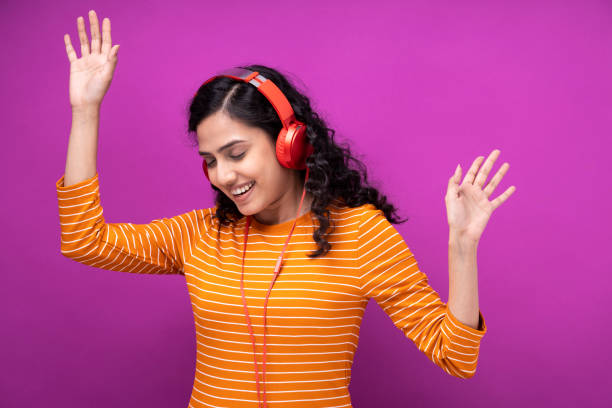The allure of Bollywood music—its vibrant rhythms and soulful melodies—makes it a tempting addition to videos, podcasts, and social media content. But before adding that iconic dance number or romantic ballad to your project, a critical question arises: Is it legal? Navigating copyright laws while chasing creativity can feel like walking a tightrope. Let’s untangle the dos, don’ts, and clever workarounds for using Bollywood tunes ethically, alongside sourcing copyright-free Bollywood music and sound effects with no copyright restrictions.
Understanding Bollywood’s Copyright Maze
Bollywood music is protected under India’s Copyright Act of 1957, which grants exclusive rights to composers, lyricists, and producers for 60 years after the creator’s death. Popular tracks from films as recent as the 2000s remain under strict copyright control. Organizations like the Indian Performing Rights Society (IPRS) and Phonographic Performance Limited (PPL) manage licensing, ensuring royalties flow to rights holders. Using a copyrighted song without permission—even a 10-second clip—can lead to takedown notices, fines, or legal action.
The key takeaway? Most Bollywood hits are not free to use. But exceptions exist.
The Myth of “Fair Use” in India
While the U.S. has “fair use” provisions for educational or transformative content, India’s “fair dealing” laws are narrower. They allow limited use for criticism, review, or reporting—but not for entertainment or background music. A YouTuber analyzing a song’s composition might qualify; a travel vlog using it for ambiance likely won’t. Always assume Bollywood music requires licensing unless explicitly stated otherwise.
Hunting for Copyright-Free Bollywood Music
The phrase “copyright free Bollywood music” can be misleading—truly copyright-free tracks are rare. However, these avenues offer legal alternatives:
- Royalty-Free Music Libraries: Platforms like FreeMusicArchive or SoundCloud host tracks inspired by Bollywood styles, composed by independent artists. Filter searches using terms like “Indian classical” or “Bhangra beats.”
- Creative Commons Licenses: Some artists release music under CC licenses (e.g., CC BY or CC BY-SA), allowing free use with proper attribution. Verify the license type on platforms like Jamendo.
- Public Domain Tracks: Pre-1960s Bollywood songs, like those from Awaara (1951), may enter the public domain, but confirm their status via official databases.
For instance, a filmmaker could use a CC-licensed “Bollywood fusion” track from an emerging composer, crediting them in the video description.
Sound Effects No Copyright: Building Authenticity Safely
Background sounds—a bustling Mumbai market, a train whistle, or festival drums—add cultural richness without legal headaches. Seek sound effects with no copyright claims through:
- CC0 Resources: Websites like Freesound or Zapsplat offer high-quality, royalty-free audio tagged “India” or “festival.”
- Self-Recordings: Capture original sounds during travels (with permission if in private spaces).
- Stock Audio Platforms: Many provide region-specific packs, such as “Indian Street Ambiance” or “Classical Instruments.”
A food blogger, for example, could layer CC0 temple bells and sitar strums under a recipe video for an authentic vibe.
Licensing Bollywood Music: When You Must Pay
If your project requires a specific Bollywood track, licensing is unavoidable. Options include:
- Sync Licenses: For pairing music with visual media (films, ads). Costs vary based on reach and duration.
- Mechanical Licenses: For cover versions or reproductions.
- Platform-Specific Licenses: YouTube’s Audio Library includes some licensed Indian music for monetized creators.
Independent artists might find licensing costs prohibitive, but brands or high-budget projects can negotiate through rights agencies like Novex Communications.
Case Study: A Social Media Success Without Risk
- Consider Travel Tales, a YouTube channel exploring Indian culture. To avoid copyright strikes, they use:
- Copyright-free Bollywood-inspired music from SoundCloud artists under CC BY licenses.
- No-copyright sound effects of monsoon rains and street chatter from Freesound.
Result? A 40% growth in monetized views and zero takedown notices.
The Risks of Ignoring Copyright Laws
Unauthorized use carries consequences:
- Content Removal: Platforms like Instagram mute or delete infringing posts.
- Revenue Loss: Monetization bans on YouTube or Facebook.
- Legal Penalties: Fines up to ₹200,000 under Indian law for commercial misuse.
A short film using an unlicensed Lata Mangeshkar track, for example, could face litigation even if non-profit.
Future-Proofing Your Content Strategy
- Audit Existing Content: Use tools like YouTube’s Copyright Checker to identify risky tracks.
- Educate Your Team: Ensure editors and designers understand licensing basics.
- Build a Sound Library: Curate CC0 music and effects categorized by mood or theme.
Conclusion: Creativity Within Boundaries
Bollywood music may be off-limits, but a world of copyright-free Bollywood-inspired tracks and sound effects no copyright awaits. By blending legal savvy with resourcefulness, creators can craft immersive, culturally resonant content without crossing ethical lines. After all, originality isn’t just about what you borrow—it’s about how you innovate within the rules.
